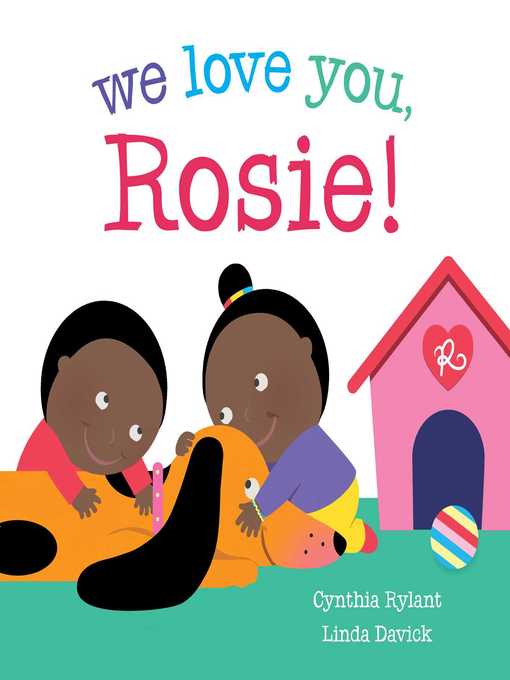
We Love You, Rosie!
فرمت کتاب
ebook
تاریخ انتشار
2017
Lexile Score
210
Reading Level
0-1
ATOS
1.4
Interest Level
K-3(LG)
نویسنده
Linda Davickناشر
Beach Lane Booksشابک
9781442465121
کتاب های مرتبط
- اطلاعات
- نقد و بررسی
- دیدگاه کاربران
نقد و بررسی

November 28, 2016
Rylant (Little Penguins) and Davick (Say Hello!) introduce opposites in a series of chapter-like scenarios starring two good-natured siblings and their frisky, floppy-eared dachshund, Rosie. A chatty narrative emphasizes each term while sounding like actual comments children might direct toward a dog. “Hello Rosie, Are you being bad? Oops. Bad eating Rosie!” writes Rylant as Davick shows the dog snagging a bit of pepperoni from an unattended slice of pizza. Colored in a bright, sherbet palette, Davick’s crisp-edged illustrations highlight the characters’ emotions (Rosie looks quite abashed about the pizza incident), and it’s always evident how much love the two round-headed, brown-skinned, eager-eyed children have for their pet. Rosie’s ongoing interest in a wild rabbit helps introduce several opposites (“Hello, Rosie. Do you want out? Rosie wants out of the kitchen”), as does the elongated shape of Rosie’s body, which allows her to be both “in” and “out” of a doghouse at the same time. Zingy repetition and visual cues smartly tailor this story to kids who are learning to read on their own. Ages 3–7. Author’s agent: Steven Malk, Writers House. Illustrator’s agent: Rubin Pfeffer, Rubin Pfeffer Content.

November 15, 2016
Two black children, who could be seen as fraternal twins, lavish love on their dachshund, Rosie.Rylant's text is written in the first person plural and uses an episodic structure that also highlights opposites. Sister and brother (unnamed in the text) affirm their love for Rosie whatever the circumstance, in brief episodes: "Day and Night...Good and Bad...In and Out...Lost and Found...Up and Down...Here and There." The playfully repetitive phrasing reads rather like the controlled text of an early reader, and clear, bold type could support new readers attempting to decode it independently. Davick's accompanying digital illustrations feature brightly colored, flat, graphically simple forms set against the clean whiteness of the pages. No other characters are present, which provides a pleasing focus on the loving dynamic between the children and their dog, as they read, play, and snuggle the days away. A cozy, Rosie read. (Picture book. 2-6)
COPYRIGHT(2016) Kirkus Reviews, ALL RIGHTS RESERVED.

February 1, 2017
PreS-Gr 1-A smiley, brown-skinned brother and sister narrate this tale, which follows their beloved dachshund, Rosie, as she goes about her busy day. The story is broken into very short chapters, each highlighting a pair of opposites. For example, in "Rosie Good and Bad," Rosie is praised for her "GOOD sitting," "GOOD barking," and "GOOD eating." After snatching a slice of pepperoni pizza off the table, however, she is told, "BAD eating, Rosie!" This is followed by the children reinforcing their unconditional love for the pup. This pattern is repeated throughout the narrative. The flat cartoon illustrations display simple shapes and bold colors on a white background. The characters, with their round heads and eyes, will appeal to young readers. The basic vocabulary, repetitive text, large font size, and ample spacing make this a good choice for beginning readers. It could also serve as an introduction to opposites.
Copyright 2017 School Library Journal, LLC Used with permission.

























دیدگاه کاربران